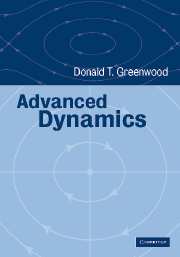6 - Introduction to numerical methods
Published online by Cambridge University Press: 05 June 2012
Summary
Digital computers are used extensively in the analysis of dynamical systems. The equations describing the motion of a system are partly dynamic and partly kinematic in nature. In either case, they take the form of ordinary differential equations which are nonlinear, in general. These differential equations are usually written with time as the independent variable, and time is assumed to vary in a continuous manner from some initial value, frequently zero, to a final value.
In any representation using digital computers, the time can assume only a finite number of discrete values. The differential equations of the system are replaced by difference equations. The solutions of these difference equations are not the same, in general, as the solutions of the corresponding differential equations at the given discrete times, thereby introducing computational errors. More importantly, if parameters such as step size are not properly chosen, a given numerical procedure may produce an apparent unstable response for a system that is actually stable.
In this chapter, we shall begin with a brief discussion of the interpolation and extrapolation of digital data. Then we will proceed with a discussion of various algorithms for the numerical integration of ordinary differential equations. The errors arising from these numerical procedures will be discussed, and questions of numerical stability will be considered.
Another important consideration in the numerical analysis of dynamical systems lies in the proper representation of geometrical constraints.
- Type
- Chapter
- Information
- Advanced Dynamics , pp. 329 - 400Publisher: Cambridge University PressPrint publication year: 2003



